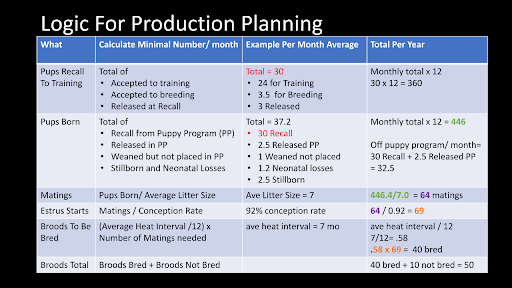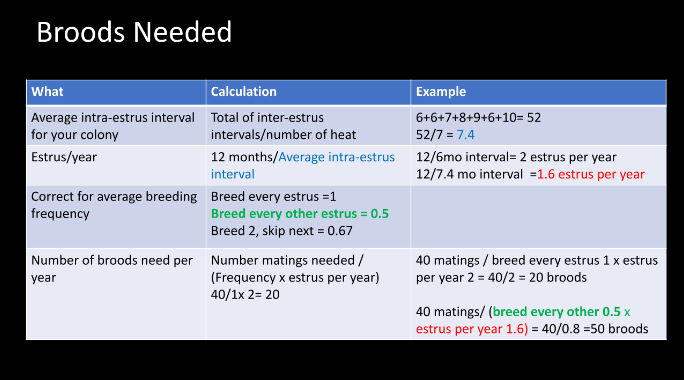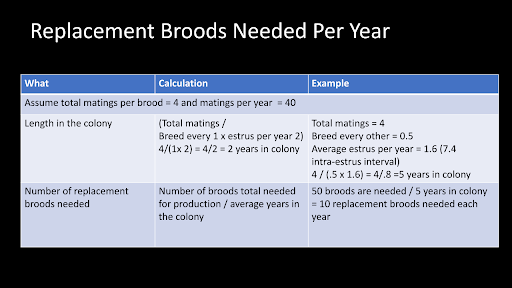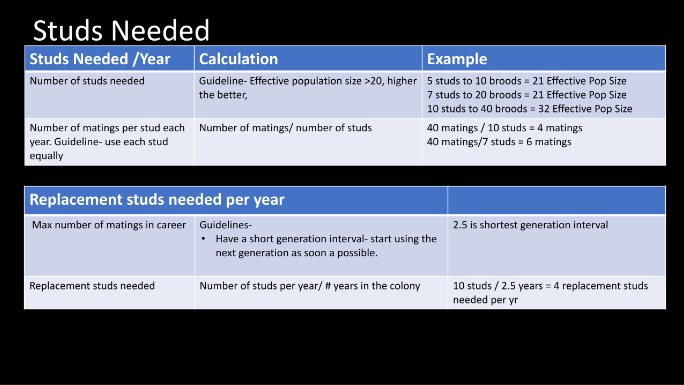Search for working dog conference recordings, articles on health, breeding, socialization and organizational management, webinar recordings and more.
Old Conference Archive Page | View all IWDC 2023 Recordings | View all Breeder's Workshop Colorado Recordings
-
Organization Management
-
Canine Resources
-
- Articles coming soon
-
-
- Emotional Conflict During Socialization
- What is environmental enrichment?
- Distance, Distraction and Duration
- Developing Foundational Skills
- Luring, Marking & Giving Food
- 5 Steps to Progressing Skills
- Dog-Human Relationship Skills
- Utilizing Volunteers
- Biosecurity
- Biosecurity protocol documents
- Example Socialization Schedule
- Puppy Socialization Tracker
- Crate Training
- Managing Inappropriate Interactions between littermates
- Preventing and Fixing Door Dashing
- Follow Me: Video
- Bath Progression: Video
- Intro to New Environments: Video
- Motor Development: Video
- Novel Objects: Video
- Novel Sounds: Video
- Trolley Ride: Video
- Wearing Things/Coat Desensitization: Video
- Carrying Puppies Safely
- Safely Using Stairs: Video
- Puppy Confidence Course
- Socialization Ideas Gallery
- Weighing Puppies: Video
- Birth of a Puppy: Video
- First Time Outside the Den: Video
- First time Exploring the Garden: Video
- Exploring the garden in the dark: Video
- Include puppies in the daily work routine: video
- Collar Habituation: video
- Exploring a wobble board
- Exploring the world - unfamiliar surroundings
- Walking around the grounds
- Socialization opportunities in daily life
- Walk in the woods
- Show Remaining Articles ( 24 ) Collapse Articles
-
- Articles coming soon
-
Education
-
-
- A Behavioral Questionnaire for Selection and Study of Odor Detection Dogs - Presented by Cynthia Otto
- Audeamus PTSD Service Dogs, ACAC Accredited Peer-Support Model for Veterans and First Responders - Presented by Chris Lohnes and Grace Rath
- Audeamus Service Dogs and University of Saskatchewan Research Partnership and Outcomes - Presented by Chris Lohnes & Grace Rath
- Building a Purpose Bred Breeding Program - Presented by Allison Peltier and Rachel Goldammer
- Core body temperature and activity level changes during work and exercise in patrol dogs of the Queensland Police Service - Presented by Jayne McGhie
- Detection of Heterobasidion parviporum scent samples in indoors scent discrimination test by trained volunteer dog-handler teams - Presented by Heli Väätäjä
- Development of a Tool to Aid in the Selection and Pairing of Breeders based on Behavioral Traits - Presented by Jordan Smith
- Early Detection of Heat Stress in Working Dogs - Presented by Andrea L. Henderson
- Effects on behavior and physiology of handling style during veterinary visits - Presented by Karen Overall
- Field cooling for exertional hyperthermia - Presented by Cynthia Otto
- From Anxious to Resilient: The Role of Dynamic Interactive Engagement in Shaping Military Working Dogs - Presented by Melanie Uhde
- Genetic Resources to Improve Dog Health - Presented by Angela Hughes (Royal Canin)
- Genomic research in the Working Dog Field: Combating Canine Cancer through Collaboration and Comparative Oncology Research - Presented by Frances L. Chen
- Handler Perceived Risks to Operational Detection and Patrol Police Dogs - Presented by Jayne McGhie
- Improving Trauma Patient Care - Presented by Kelly Hall
- Neuromuscular Balance Training in Working Dogs - Presented by Andrea L. Henderson
- Occupational Risks and Specialized Veterinary Care for Working Dogs - Presented by Cynthia Otto
- Putting working dog research into practice: development of science-based guidance notes - Presented by Fiona Williams
- Rating of Perceived Exertion in Working Dogs - Presented by Andrea L. Henderson
- Real-world experience with liquid biopsy testing for cancer detection in working dogs - Presented by Jill Rafalko
- Specialty Practice Behavioral Problems and Outcomes in Companion Dogs - Implications for Working Canines - Presented by Walt Burghardt
- Start of life – Feeding during pregnancy and lactation to increase reproductive success - presented by Angela Hughes (Royal Canin)
- Teaching Collar Yielding as a Foundation Behavior - Presented by Patrick Glines
- The Doberman Diversity Project: a Citizen Science approach to breed improvement - Presented by Sophie Liu
- The effect of inhibitory control, arousal, and affective state in Military Working Dogs Performance - Presented by Astrid Concha
- The effect of training aid volume on odor generalization in detection of chronic wasting disease in deer - Presented by Mallikarjun and Wilson & Cindy Otto
- The Many Dogs Project: A Big Team Canine Science Effort - Presented by Sarah-Elizabeth Byosiere
- Transformative Power of Freedom of Choice in Changing Behavior - Presented by Marty G. Roache
- Turning a Critical Eye on an Established Breeding Program to Improve End Results Using IWDR - Presented by Natalie Ergler and Rachel Goldammer
- U.S. Military Working Dog Welfare - Presented by Desireé Broach
- What is the future of Biological Detection Canines? - Presented by Heather Junqueira & Ken Furton
- Working dog memory and canine gut microbiome - Presented by Xu Wang
- Show Remaining Articles ( 17 ) Collapse Articles
-
- Breeding Healthy Dogs - Presented by Madeline Zimmermann
- Choosing What to Breed For - Presented by Madeline Zimmermann
- Gaiting - with Doug & Colton Johnson
- Genetic Merit Selection - Presented by Madeline Zimmermann
- Improving Behavior - Presented by Jane Russenberger & Dr. David Roberts
- IWDR: Storing your Data - Presented by Rachel Goldammer
- Keep Data on Everything! - Presented by Rachel Goldammer
- Long-Term Colony Management: Balancing genetic improvement breeding for the whole dog - Presented by Dr. Eldin Leighton
- Power of Numbers: IWDR Functions - Presented by Rachel Goldammer
- Producing Puppies - Presented by Dr. Fiona Hollinshead and Dr. Greg Burns
- Puppy Socialization - Presented by Jane Russenberger
- Puppy Socialization for Handling - presented by Doug & Colton Johnson
- Reading Dog Behavior/Emotional States - Presented by Dr. Karen Overall
- Whelping and Neonatal Care - Presented by Dr. Fiona Hollinshead and Dr. Greg Burns
-
- "All about the boy" - Semen Collection and Analysis - presentation by Dr. Fiona Hollinshead
- All about the brood - presentation by Dr. Greg Burns
- Behavior Checklist (BCL) Workshop - with Helen West
- Behavioral scoring in Puppy Raising - presentation by Helen West
- Brood and Whelping Concerns - presentation by Dr Greg Burns
- Calculating Differential Risk of Osteoarthritis in Dogs with Low vs High Hip Scores - presentation by Dr Tom Lewis
- Cardiac diseases - presentation by Dr Kevin Conrad (absent); presented by Dr. Kyle Quigley
- Conditioning Program for Dogs Coming In For Training - presentation by Dr Kevin Conrad (via zoom)
- Critical periods of socialization and impact on temperament of the dog - presentation by Jane Russenberger
- Does early potty training affect indiscriminate relieving? - presentation by Dr Lynna Feng
- Dog behavior is in the eye of the beholder - presentation by Joke Monteny
- Entropion - presentation by Jenna Bullis
- Feeding for Breeding Success - presentation by Dr. Emmanuel Fontaine
- Gait and Structure Evaluation for Guide Dogs - presentation by Peggy Gibbon and Dr Katy Evans
- GDBart Puppy Test - presentation by Helen West
- Healthy microbiome and faecal transplants - presentation by Dr Kevin Conrad (absent); presented by Dr Caroline Moeser
- Hip and elbow assessments - with Dr Bart Broeckx
- How to make breeding decisions on traits without EBVs - presentation by Madeline Zimmermann
- How to use estimated breeding values successfully - presentation by Madeline Zimmermann
- Improving behavior with EBVs: Body sensitivity, Noise Fear, Inhibited by Stress, Activated by Stress, Excitable - presentation by Jane Russenberger
- Improving health using EBVs: Elbow, Skin and Mast cell tumours - presentation by Madeline Zimmermann
- Is it really epilepsy? - with Dr Bob Proesmans & Dr Caroline Moeser
- Neonatal Care - presentation by Dr Emmanuel Fontaine
- Reproductive Trends and Cryogenic Insights from Guiding Eyes - presentation by Clover Williams
- Selecting Reproductively Healthy Dogs - presentation by Dr Emmanuel Fontaine
- Skin allergies - with Dr Caroline Moeser
- Stargardt's disease in Labrador retrievers - with Dr Katy Evans
- Strategies for genetic diversity - presentation by Jackie Clark and Dr Bart Broeckx
- Superficial Digital Flexor Tendon Avulsion - presentation by Dr Caroline Moeser
- The art of insemination - presentation by Dr. Fiona Hollinshead
- The Overall Selection Index - presentation by Dr Eldin Leighton
- What influences semen quality? - presentation by Dr. Tom Lewis
- Show Remaining Articles ( 17 ) Collapse Articles
-
- A detailed evaluation of Spotted Lanternfly (Lycorma delicatula) detection dog training and performance - Presented by Edgar O. Aviles-Rosa
- A novel method for the detection of Japanese knotweed (Reynoutria japonica) using specially trained canines - Presented by Kat Janczur
- AKC Detection Dog Task Force Program: Working with AKC Breeders to Improve Breeding & Availability of Explosives Detection Dogs - Presented by S Goffe
- Assessing working dog fitness with the Penn Vet Working Dog Center Fit To Work program - Presented by Brian Farr
- Assessment of the Agreement between Fosters and Trainers Evaluating Behavior with the C-BARQ and Behavior Checklist presented by Elizabeth Hare
- Behaviour Assessment and IWDR - Presented by Dr Jane Russenberger
- Breeding Strategies and Advanced Reproductive Techniques to Optimize Production of Improved Generations of Specialized Canines at Three major working dog breeding programs in New Zealand - presented by Dr Fiona Hollinshead
- Development and heritability of cognitive traits in Canine Companions dogs presented by Emily Bray
- Digital innovation for working dogs - Presented by Dr Mia Cobb
- Discrimination between SARS-CoV-2 infection and other viral respiratory infections by working dogs - Presented by Nele ten Hagen
- Effect of impulsivity and core effect on training performance in dual purpose military working dogs - Presented by Astrid Concha
- Epilepsy in working dogs - Presented by Prof Holger Volk
- Estimated Breeding Values in IWDR - Presented by Dr Eldin Leighton
- Examining the Role of Significant Others in Canine Welfare within the Context of Veterans Working with Service Dogs - Presented by Linzi Williamson
- Explosive detection canine operational requirements and performance degradation: expert perspectives - Presented by Brian Farr
- Hot Topics in Working Dog Care - Presented by Dr B. Pierce & Dr K. Mann
- Implementation of a plan to decrease arousal and increase motivation - Presented by Robert Dougherty Jr and Alena Heyer
- Improving behavior monitoring within a working dog program - Presented by Becky Hunt
- Incidence of enteric pathogens versus presence of gastrointestinal symptoms in a working dog training facility - Presented by Dr Nicola Cotton
- Investigation of tail injury at Lackland Air Force Base Training Kennels for Military Working Dogs - Presented by Marty G. Roache & Karen L. Overall
- Learning to Smell: Impacts of Training and Experience on Detection Dog Performance - Presented by Nathaniel Hall
- Lecture on Generalization in Detection Work - Presented by Hans Ebbers
- Liquid biopsy screening for early cancer detection in working dogs - Presented by Katherine M. Lytle, DVM, MPH, MS
- Military Working Dog Aggression and Welfare - Presented by Desiree Broach
- Multimodal characterization of detection dog suitability: Combining behavioral, cognitive, and neurological measures for enhancing selection - Presented by Lucia Lazarowski
- Overview of the IWDR for Working Dog Organizations - Presented by Dr Eldin Leighton
- Pandemic or pandemonium? Creating standards for medical detection dogs - Presented by Dr Cynthia Otto
- Penn Vet Working Dog Center Fit To Work program foundational fitness development and training - Presented by Meghan Ramos
- Preliminary Accuracy of COVID-19 odor detection by canines - Presented by Kenneth G. Furton
- Prevalence of Canine Degenerative Myelopathy SOD-1 Mutation in Working Shepherd Dogs across Australia and New Zealand - Presented by Jayne McGhie
- Scent dog identification of SARS-CoV-2-infections- a double blind study - Presented by Esther Schalke
- Solving cold-cases: Dogs can match human scents collected several years apart - Presented by Margot Perez
- The Application / Practical Implementation Pro/Cons of Covid-19 Olfactory Detection Dogs - Presented by Prof D Grandjean
- The Domestic Breeding Consortium: Odor Detection Canine Selection, Breeding, and Early Training Techniques - Presented by Karen Meidenbauer
- The effect of maternal style on later puppy behavior in Canine Companions dogs - Presented by Brenda Kennedy
- The use of historical health records at The Seeing Eye in genome-wide association studies for canine health traits presented by Katy M. Evans
- Training with Varying Odor Concentrations: Implications for Odor Detection Thresholds in Canines - Presented by Mallory DeChant
- Transitioning a Therapy Dog Program Online: What's In It For the Dog? - Presented by Ben Carey
- Using IWDR's Advanced Tools to Improve HeaLth and Behaviour - Presented by Dr Eldin Leighton
- Using Single-Step Genomic BLUP to Compute Genomic Enhanced Breeding values for Self-Modulation in Working Dogs presented by Molly Riser
- Using trained dogs and organic semi-conducting sensors to identify asymptomatic and mild SARS-CoV-2 infections - Presented by Dr Claire Guest and Prof James Logan
- Working Dog Welfare: Where are we now and where are we going? - Presented by Dr Mia Cobb
- Show Remaining Articles ( 27 ) Collapse Articles
-
- A canine thermal model for mitigation of heat strain in working dogs - Presented by C. O'Brien
- Building a better detector dog: Lessons learned and (many) questions remaining to be explored in Auburn University’s 19 years of detector dog production - Presented by P. Waggoner, PhD
- From Puppyhood to Adolescence: Longitudinal Cognition Study at Canine Companions for Independence - Presented by K. Levy
- Genome-wide association studies to identify loci and variants associated with behavioral traits in dogs - Presented by V.D. Marinescu, PhD
- Hyper-reactivity in military working dogs: a report of two cases - Presented by O. Soares, DVM, PhD
- Measuring, and determining factors affecting performance of glycemic alert dogs - Presentation by N. Rooney, PhD
- Neuromotor development in puppies: implications for training and fitness - Presented by B. Pierce, DVM, MS, DACVIM, DACVP, DACVSMR
- Odour generalisation – theory and practice - Presented by A. Schoon, PhD
- Putting working dog research into practice: development of science-based guidance notes - Presented by V. Ratcliffe, PhD
- Referential focus - pet & working dogs - Presented by K. Overall, MA, VMD, PhD, DACVB
- Statistics for working dogs – how do you know if your test/assessments are better than a coin toss? - Presented by A. Dunham, PhD
- Temperament and EBV - Presented by Erling Strandberg, PhD, SKK
- Testing dogs for behaviour in Sweden: Canine temperament - assessment and heritability & How you assess temperament - presented by Åke Hedhammar DVM, PhD & Kenth Svartberg, PhD
- The chemistry of odor: How understanding odor can foster a better detector - Presented by L. De Greeff, PhD
- The opioid crisis and working dogs - Presented by C. Otto, DVM, PhD, DAVCECC
- What helps and what hinders assistance dog/puppy raising practices? - Presented by Doc Loc Mai (Jimmy)
- Working Dog Centre: Working hard for working dogs - Presented by W. Baltzer, DVM, PhD
- Show Remaining Articles ( 2 ) Collapse Articles
-
-
-
- Veterinary Genetics with Dr Angela Hughes
- Optimizing Volunteers for Early Socialization Success with Liz Rote
- Inbreeding in Working Dog Colonies with Dr Eldin Leighton
- Partners in crime - help puppy raisers turn fun policing upside down - with Matthias Lenz
- Improving Digital Processes and Datakeeping for Volunteers and Working Dog Programs - with Dani Prebensen
- Walk and Talks: Beyond the Data - with Jackie Clark
- Building a Healthy Relationship with Your Nonprofit Board - With Laura Edwards
- Identify and Build a Healthy Nonprofit Board – With Laura Edwards
-
-
-
Payment and Accounts
Production Planning
0 out of 5 stars
| 5 Stars | 0% | |
| 4 Stars | 0% | |
| 3 Stars | 0% | |
| 2 Stars | 0% | |
| 1 Stars | 0% |
Production planning at its core is producing the right number of dogs, when they are needed, with the traits required (breed, sex, size, personality, health) to meet the needs of the training department, clients, and replacement breeders. Simple in theory, but theory doesn’t always fit easily into real life situations. The reality is over or under production can be costly and lead to loss of resources: financially, emotional fatigue of staff/volunteers, loss of skilled staff/volunteers, and lead to strains on infrastructure like kennel space. Also, there are outside factors that can upend a carefully crafted production plan when not considered. The three major external influences to consider that can upset a production plan are fertility, capacity, and other factors within the organization.
Note: Although this article is free to read, it contains some resources which are only available to IWDA / IWDR members. Thanks to our members for their support which enables us to create articles and resources like this!
- Not an IWDA member? Become one today.
Fertility
Fertility encompasses everything from heat cycle intervals, estrus start dates, ovulation, conception rates, semen management, and stillborn and neonatal losses. Heat cycle intervals, estrus start dates, and ovulation are factors that you have little to no control over. However, proper record keeping, hormonal testing, and breeding timing can help make informed decisions and plans. Additionally, working with local reproduction vets can help improve fertility issues.
IWDR has several such tools easily accessible to users of the database:
Conception rates can often limit production planning by affecting timing of litters born, number of puppies born, and even affecting the breed of dogs available. Using industry best practices can help increase conception rates. Hormonal testing, vaginal cytology, pre-breeding exams, and semen evaluations are but a few factors that can help mitigate poor conception rates. Another factor is timing and breeding methods. Using the data collected from the hormonal tests, vaginal cytology, and semen evaluations, you can breed on the right dates to increase conception chances. Using the right method, natural or artificial insemination via catheter, MAVIC catheter, or transcervical insemination can also increase conception rates. IWDR’s Knowledge Base Resource Center has several articles relating to this topic:
- Types of mating
- Maximising litter size
- Semen management. Maintaining high quality semen in your colony begins with selecting only males with quality semen. Care of the male, testing for brucellosis prior to breeding as well as nutrition and other environmental stressors such as exposure to excessive heat all play a role. Semen should be routinely evaluated before the planned mating.
Stillborn and neonatal losses are a frustrating part of breeding. Average loss is considered between 5% to 10% so this should be accounted for in colony planning. (Chastant-Maillard S, Guillemot C, Feugier A, Mariani C, Grellet A, Mila H. Reproductive performance and pre-weaning mortality: Preliminary analysis of 27,221 purebred female dogs and 204,537 puppies in France. Reprod Domest Anim. 2017 Apr;52 Suppl 2:158-162. doi: 10.1111/rda.12845. Epub 2016 Nov 7. PMID: 28402063; Indrebø, A., Trangerud, C. & Moe, L. Canine neonatal mortality in four large breeds. Acta Vet Scand 49 (Suppl 1), S2 (2007). https://doi.org/10.1186/1751-0147-49-S1-S2). Stillborn and neonatal losses can be mitigated by managing the brood’s health at every stage: pre-breeding, gestation, and lactation. Also, rates can improve by following biosecurity recommendations to keep outside viruses, parasites, bacteria, and other factors from harming the litter.
- Adding stillborn and neonatal losses: There is no charge to add these puppies and the data are critical to know for colony health and production planning.
Capacity
Capacity doesn’t just refer to spaces like whelping areas and kennel space for breeders, puppies, and dogs in training, but also to people needed to make the organization run. Skilled and experienced staff and volunteers are needed to help whelp, socialize, raise, and train the dogs needed. Creating a production plan and communicating the number of puppies targeted with the relevant staff (e.g. Puppy program manager, Kennels manager etc) will allow for advance planning. For example, a puppy raising department knowing at the beginning of the year that 150 puppies is the target will allow them to know how many raisers they need to recruit, train, and prepare. They can also look at the dogs being recalled for training during that year to talk to specific raisers about re-raising. The breeding department meanwhile can look at upcoming heat cycles and plan breedings around whelping bay capacities and even major holidays when there is typically a strain on volunteer/staff resources.
If an increase in output of graduated dogs is expected, the breeding colony also needs to be increased by the number of broods about 2-3 years prior to starting training. Increased studs are also needed to maintain genetic diversity. Projecting dog supply for the upcoming 3 to 5 years, ensuring that the organization has proper physical space to support the number of dogs needed, and has ample staff and volunteers to support the organization needs is key to production planning.
Other Factors within the Organization
Other factors that affect production planning success can be mitigated by clear communication, defined processes, and strategic planning. Early socialization, puppy raiser skills, vet criteria, trainer skills and experiences, and client’s needs all factor into successful placement and influence production needs.
Early socialization is critical in developing a dog’s confidence and ability to adapt to new and novel stimuli and situations. Creating a program that gives the puppies safe and positive experiences is essential for long term success and stability.
Puppy raiser skills and experience should be considered when placing puppies into their homes. Identifying the top 5 behavioral reasons for dog failure in your program and knowing which are more strongly influenced by the environment provides focus for increased attention to puppy matching, training, and support of puppy raisers. Accurate End Reasons stored in IWDR are used to create a summary graph of failure reasons.
A puppy raising program that emphasizes support, continuing education, and creates an environment for clear and open communication helps set the raisers and puppies up for success.
Having concise protocols and processes for veterinary care allows for clear communication and standards for success. This can be achieved by setting up scheduled exams, assessments, talking to veterinarian partners about communicating clear diagnoses (i.e. ear debris vs ear flush vs otitis), and gathering basic health clearances. Understanding your colony’s health can create a sustainable production plan.
Trainer skills and expectations influence successful placements. Creating a common language around temperament and training is key to making sure trainers, breeding staff, and puppy raising staff are communicating in productive ways. The Behavior Checklist or BCL helps standardize terminology across all users and leads to clearer understanding of organizational needs.
Keeping track of the needs of clients served, potential clients, and repeat clients will help steer production needs. It is important to take into consideration the kind of breed and personality that makes up the majority of placed dogs. It takes most dogs around 2 years from birth to client placement so knowing the demographic of clients currently utilizing your organization and clients who could be or will come back will help make breeding decisions based on breed and temperament.
Making the External Influences Work for You
When it comes to production planning and considering the above factors, communication is key. Communicate regularly with colleagues who influence breeding, puppy raising, veterinary, training, client services, and strategic planning. Knowing what the organization as a whole needs to make a successful match will help in making long term decisions. Additionally, utilizing industry best practices to help alleviate issues that arise from fertility and capacity issues, training, staffing, and limited resources. Finally, follow the basic rule that the number of puppies entering the program must equal the number of young dogs needed to be recalled to training every 12 to 15 months. Include losses due to health, temperament, and accidents in those calculations.
Production Plot Workbook & Logic for Production Planning
The production plot workbook is a great tool to help strategically plan for the future. Below are some slides with the logic and descriptions for production planning, and underneath those slides our production planning workbook is available for IWDA members to download.
- Not an IWDA member? Become one today.




This content is for members only. Please login or register to view it.
Effective Population Size
Effective population size (Ne) is a key parameter in population genetics. It is the number of individuals that effectively participates in producing the next generation. It also quantifies the magnitude of genetic drift and inbreeding within a breeding colony. The overall goal is to have Ne be as high as possible.
- Read our article on Effective Population size here. Members can also access our Effective Population size calculator.
0 out of 5 stars
| 5 Stars | 0% | |
| 4 Stars | 0% | |
| 3 Stars | 0% | |
| 2 Stars | 0% | |
| 1 Stars | 0% |
